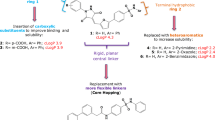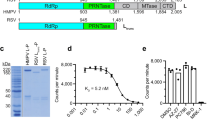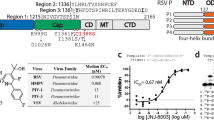Abstract
ISATIN 3-thiosemicarbazone is known to have antiviral activity against certain poxviruses1,2. The antiviral spectrum of 1-methylisatin 3-thiosemicarbazone, which reportedly extends to adenoviruses, may be rather broader but is still limited to several groups of DNA viruses2,3. It was therefore an unexpected finding that these compounds are also active against certain rhinoviruses. As a result, related heterocyclic compounds were tested of which several examples are shown here; two (D and E) were found to have activity against all rhinovirus strains used so far.
This is a preview of subscription content, access via your institution
Access options
Subscribe to this journal
Receive 51 print issues and online access
$199.00 per year
only $3.90 per issue
Buy this article
- Purchase on Springer Link
- Instant access to full article PDF
Prices may be subject to local taxes which are calculated during checkout
Similar content being viewed by others
References
Thompson, R. L., Minton, jun., S. A., Officer, J. E., and Hitchings, G. H., J. Immunol., 70, 229 (1953).
Bauer, D. J., and Sadler, P. W., Brit. J. Pharmacol. Chemother., 15, 101 (1960).
Bauer, D. J., and Apostolov, K., Science, 154, 796 (1966).
Tyrrell, D. A. J., and Bynoe, M. L., Brit. Med. J., i, 393 (1961).
Author information
Authors and Affiliations
Rights and permissions
About this article
Cite this article
GLADYCH, J., HUNT, J., JACK, D. et al. Inhibition of Rhinovirus by Isatin Thiosemicarbazone Analogues. Nature 221, 286–287 (1969). https://doi.org/10.1038/221286b0
Received:
Revised:
Issue Date:
DOI: https://doi.org/10.1038/221286b0
This article is cited by
-
New data on the antiviral activity of heterocyclic compounds
Pharmaceutical Chemistry Journal (1973)
Comments
By submitting a comment you agree to abide by our Terms and Community Guidelines. If you find something abusive or that does not comply with our terms or guidelines please flag it as inappropriate.



